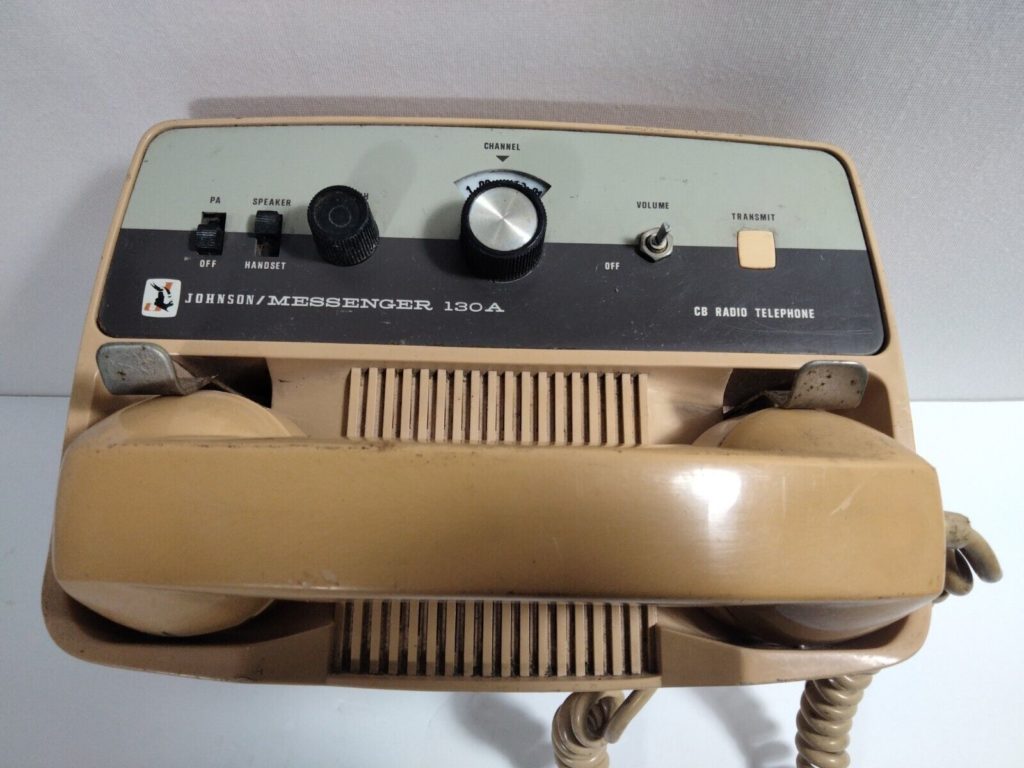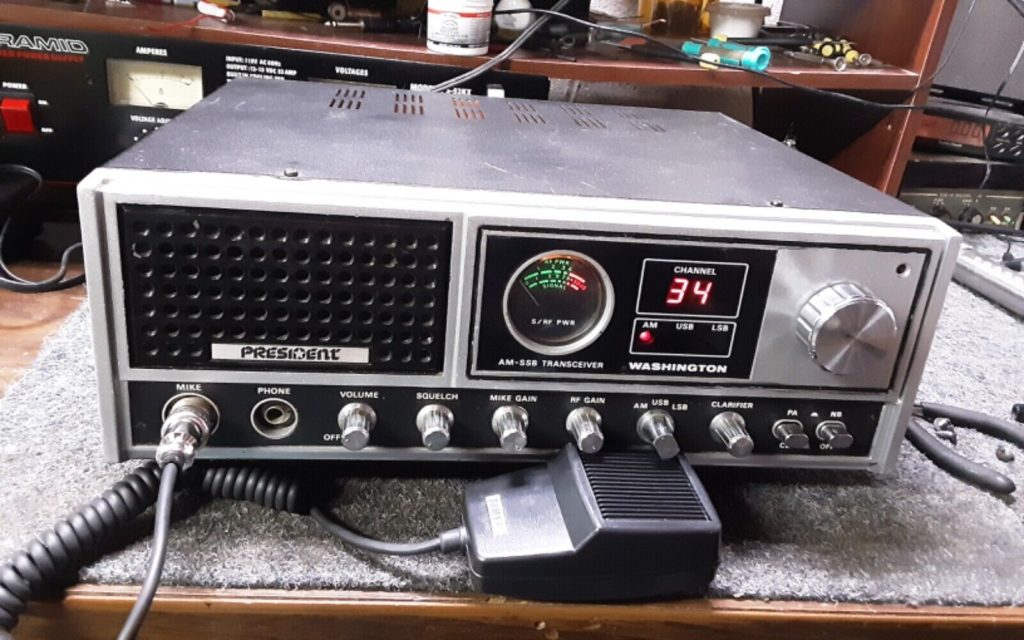
Here is how the conversation usually goes “I’ve had this radio for a couple of years”, (yeah, like 35),” and would like to have it up and running again”. Internally, I scream, externally, numb, and have the look like I’m as dead as his radio.

Before we dive into the involvement of this “repair” let’s go over a little history. Back in the 70s a board was made that took the CB world by storm, the Uniden Upd 858 SSB. It was such a success that it was used by Cobra, Courier, President, Realistic, Robyns, Teaberry and of course Uniden. These are names that will make any radio head smile and nod! Whether you had a Tandy TRC-457 Navaho or a President Madison, you had a rocking radio. But then every self-made radio tech decided to drill holes, add switches, extra channels, “open up the clarifier”, add 3 noise toys, a 10k switch, an echo board, talkback, and a roger beep. That’s not an exaggeration, I actually saw one and I think a blood tear came out my eye. But I’m not here to trash anyone on experimentation, hell I still have scars from Rf burns from when I didn’t listen. But what I want to present what is how involved restoring a great old radio can be, doing it the right way.


First stop, the power supply and you have to check the transformer output voltage, if good, recap with computer grade electrolytics, no questions asked. On to the board, replace EVERY electrolytic and tantalum cap. An electrolytic that’s 30 years old is dryer than the Mojave, and if you don’t replace them, you’re doing the job beyond half-assed. For the sake of this article, I went to an old parts list, and it looks like around 50 caps total. Now you have to go to a schematic or parts list and look up every cap for its value and voltage and then look them up online. Also think about where you can upgrade but never downgrade on the caps. Don’t do an eBay thing, Chinese knockoffs are all over the place! I got burned about 16 years ago when they discontinued the 1969 finals. They were so bad we taped them to a board and shot them with a pellet gun for practice on trigger control. Let’s pause for a minute and review the time invested so far. Checking output voltage, that was moments (we are hopeful it can deliver the necessary current). Looking up all the capacitors, getting their respective values, then getting part numbers and putting in an order or shopping around for the best price? HA, you will fall down the rabbit hole, get distracted, order a 16 volt when you needed a 25 volt then, look up if a Coyote engine can compete with an LS3, go to Amazon, then go get something to eat. If you’re good, you will make a check list and bang this out efficiently, but you must take the time to make an accurate check list! See where I’m going with this? It takes time.
Oh yeah, get a MOV. It’s the cheapest and most effective investment you can make! Time and parts.
Now the fun part. The series pass transistors – pull them, test them, clean them up and don’t use thermal paste. (If they need to be replaced you might shit at the price). As a matter of fact, pull every component that’s on thermal paste with mica or ceramic insulators. Do some research and look for thermally conductive insulators. You can get them ready made for the size of the component or cut them yourself. The reason, that white paste is as dry as your caps! It has the thermal transmission capacity of a Yeti cooler, next to none. And you don’t need the micas anymore. Good thing because they will probably break when you take them out. Time check: freakin hours. Caveat, the collectors (BJT) or drains (FET) are usually the tabs, so they must be isolated from the frame. Time and parts.
Now off to the audio IC. Let’s say you have an NEC C1158H. They stopped making them around 1980. But wait we can use the old 10 pin TA 7222, cross wire and reconfigure and drill a hole and we’re good to go. But wait, they stopped making them like 2004. Again, you go to eBay and find an advertised NOS (bullshit) or hack up some other radio and hope it works (used parts). Time and parts.
Driver and Final. Good chance it will have a 2SC1306 and a 2SC1307. Well, they’re ancient history so we’ll use a 2166 and a 1969 which aren’t made any more either. Great, more used parts. No wait, we do a mosfet conversion. We’ll need a couple of mosfets, a zener, 5 resistors, 5 caps, and a couple of trimmers. Time and parts
I forgot to mention, we’re pulling out every hobo-slob-job-add-on and taking it back to original. Voltage steeling hack jobs are very common. Time, maybe some parts.
Double check the “opened” clarifier. If it’s sliding 10k fix it. Time and parts.
Definitely replace the relay, good luck. Every trimmer resistor (VR) on the board will need to be replaced. Again, look each one up on the schematic to get the values and then go find them. If you skip this part, you may lose your mind over gunk and dirt breaking contact on a trimmer! Time and parts.
Check every pot! I once found a 50K in place of a 1K. And they were wondering why the Rf and Mic gain were so un-adjustable. Time, maybe parts.
Make sure you at least shower by now because you are days into this, and you probably smell.
I get that this sounds so freakin negative, but just be aware, no matter what you are looking to have done, time is money and when all is said and done, the only thing you might have is a lighter wallet and a box of sentiment. If you want to do it yourself, do it! I encourage you to take on this adventure. The shit you will learn is immeasurable! It won’t be a waste of your time for even if you FUBAR it, you will learn! You will hone your organizational skills. You will think in a logical way, take notes, learn how it all works and if you blow it up, you still learned! Years ago being a student of both Bill Orr and Joe Carr where I read everything they ever published, I decided to build a 2 tube horizontal sweep tube linear for 6 meters (ha,yeah right). Starting with nothing, I had a local tin shop bend me up a chassis and cover, then had at it. I almost shit at the price of a Dahl transformer, but I needed the voltage, so I paid. Every day I was like Ralphie running to the mailbox looking for his Ovaltine decoder. When it all came together, I put 2 watts into it and then added a little swing and holy shit I had a 150 watt linear. Nothing will match that first time, nothing! I have to say that I did burn up a set of tubes, bias was too high, and that was expensive. But I didn’t care. I found the mistake, corrected it. I ran that thing with a Cobra 25 for years until one night of too much of the creature in me. I switched radios and for 150 milliseconds a flash of blue-white light told me 2 things. Watch what you’re doing when you imbibe, and man did I enjoy the whole process of putting that thing together. I know I digressed a little here, but the main point is to do it correctly is a shitload of fun, and, expensive. My recommendation is do it yourself, get a buddy to do it, or maybe just move on. Most of all, have fun!
Mark